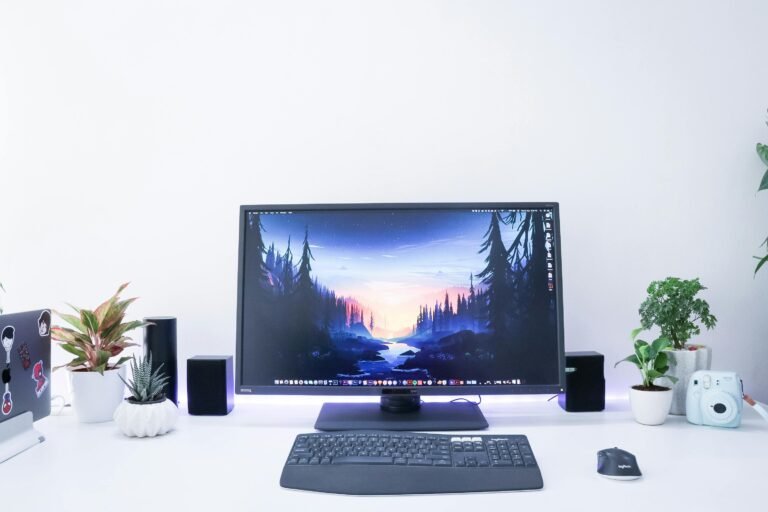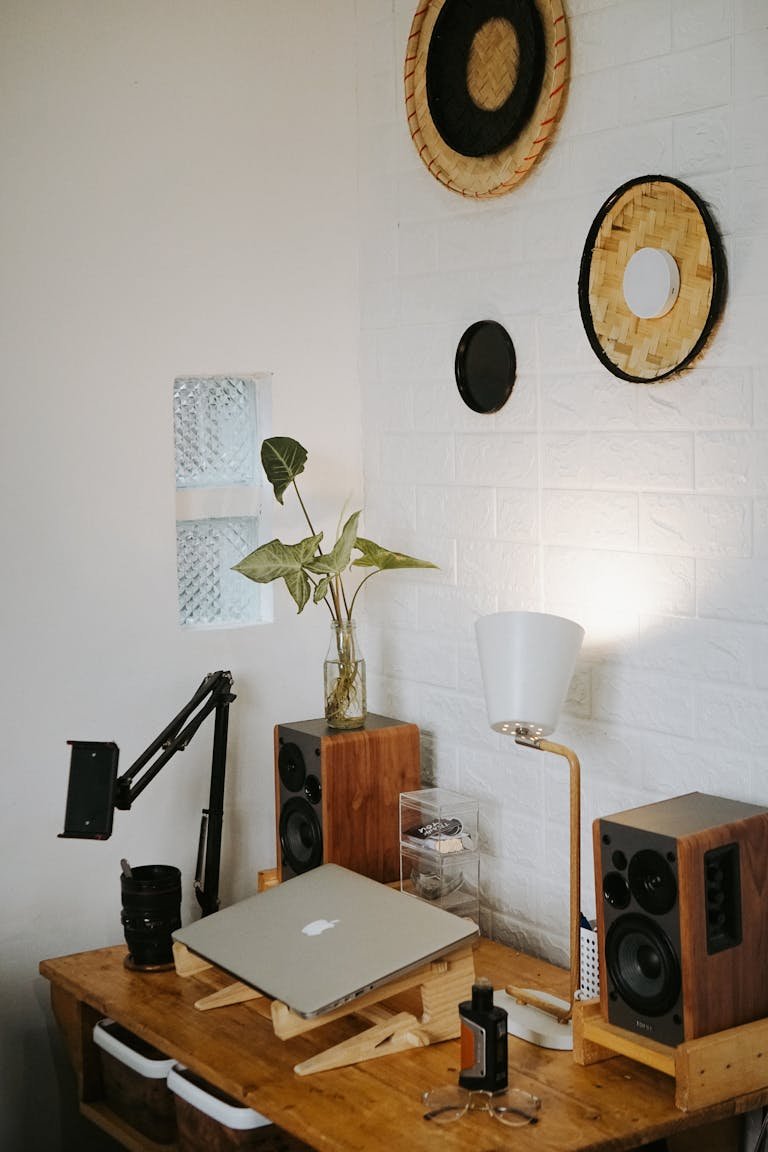
Introduction to Desk Height Importance
In both workplace and home office settings, the height of the desk plays a crucial role in ensuring the comfort and productivity of individuals. Desk height can significantly influence one’s posture, leading to various physical consequences if not appropriately addressed. A desk that is too high or too low can result in discomfort, potential strain on the back and neck, and long-term health issues. Therefore, understanding how to choose the right desk height is essential for creating an ergonomic workspace.
An appropriate desk height allows users to maintain a neutral posture while seated or standing, which is vital for reducing fatigue and enhancing concentration. When a desk is set at the right elevation, workers can easily reach their keyboards and bring their arms to a comfortable angle without needing to overextend or slouch. This ergonomic consideration not only reduces the risk of musculoskeletal disorders but also aids in sustaining high levels of focus and productivity throughout the day.
Furthermore, a well-adjusted desk height can contribute to better circulation and comfort while seated. For example, a desk height that promotes proper alignment ensures that feet can rest flat on the floor, which is essential for avoiding unnecessary strain. This aspect of ergonomics becomes even more important as many individuals spend prolonged hours at their desks, making it imperative to focus on how to choose the right desk height. In essence, the desk height is not just a trivial detail; it is a fundamental factor that intertwines with overall well-being and efficiency in work performance.
Understanding Ergonomics
Ergonomics is a multidisciplinary field focused on designing workspaces, tools, and tasks to fit the capabilities and limitations of the human body. The principles of ergonomics elevate the importance of desk height, as an appropriate height contributes significantly to overall comfort and productivity. When individuals work at desks that do not meet ergonomic standards, they may experience various discomforts, including neck strain, shoulder pain, and lower back distress. This emphasizes the necessity of understanding how to choose the right desk height for one’s specific needs.
To achieve an ergonomic workspace, one must consider the dimensions of their work area and their body mechanics. The ideal desk height allows users to maintain a neutral seating posture, where their elbows are at a 90-degree angle or slightly obtuse, and their feet rest flat on the ground. Furthermore, the alignment of the computer screen is crucial; the top of the screen should be at or slightly below eye level to reduce neck strain. The importance of aligning desk height with individual body dimensions cannot be overstated, as this factor plays a pivotal role in preventing repetitive strain injuries.
Incorporating ergonomic principles, such as using adjustable desks, can significantly enhance workplace comfort. Adjustable desks allow users to alternate between sitting and standing positions, which can lead to improved circulation and decreased fatigue. Moreover, providing adequate foot support, maintaining proper monitor height, and ensuring the accessibility of frequently used items can further optimize the workspace. By focusing on these ergonomic elements when determining how to choose the right desk height, individuals can create an environment that not only fosters efficiency but also safeguards against the potential health risks associated with poor posture and inadequate workspace design.
Factors to Consider When Choosing Desk Height
When determining how to choose the right desk height, several essential factors must be taken into account to ensure optimal comfort and productivity. One of the most significant considerations is the user’s height. Each individual has unique anthropometric measurements, and the desk height should correspond to the user’s stature. For instance, a desk that is too low can lead to slouching or improper posture, whereas one that is too high may require the user to reach excessively, resulting in strain. Measuring the distance from the floor to the user’s elbows while seated is a practical step to gauge the ideal desk height for sitting tasks.
Additionally, the type of tasks being performed at the desk plays a crucial role in this decision-making process. For example, if the majority of work involves typing or writing, the desk needs to be low enough to allow the user to maintain a comfortable elbow angle. In contrast, if standing tasks are predominant, height-adjustable desks may be the best option, enabling users to alternate between sitting and standing positions throughout the day. This flexibility can greatly enhance comfort during prolonged work sessions.
The chair being used is another essential factor in determining the appropriate desk height. A well-designed chair should have adjustable features, including height, allowing users to customize their seating position relative to the desk. A chair that promotes healthy posture will substantially contribute to the overall comfort that a desk provides. Proper alignment between the desk height and chair height also ensures that the user maintains an ergonomic position, further preventing discomfort and potential musculoskeletal disorders.
Taking the time to consider these factors when selecting a desk height is crucial for creating a workspace that supports both efficiency and well-being. By personalizing the desk setup to suit individual needs, users can significantly enhance their productivity and comfort levels.
Ideal Desk Heights for Different User Heights
Choosing the right desk height plays a crucial role in achieving optimal comfort and productivity. This section provides specific guidelines based on the overall height of the user, focusing on both sitting and standing work scenarios. When determining the appropriate desk height, it is important to consider individual measurements to ensure a perfect fit.
For individuals who are between 5’0” and 5’5”, the ideal desk height typically falls within the range of 24 to 28 inches. Many users within this height range may find that a desk height of 26 inches is a suitable option. Measuring from the floor to the extent of one’s elbows can help further refine this selection, allowing for adequate forearm support while typing.
Users standing at a height of 5’6” to 6’0” would benefit from desks that measure between 28 and 30 inches high. A desk height of 29 inches is often recommended, as it aligns with the ergonomic position of the arms, reducing strain during prolonged use. It is essential that the hands remain parallel to the floor to minimize discomfort.
For those over 6’0”, desks ranging from 30 to 32 inches are ideal. Specifically, a desk height of around 31 inches is commonly suggested for achieving a comfortable posture. Users should ensure their chair and monitor compatibility to maintain an overall ergonomic workspace.
Regardless of height, measuring one’s own body is vital. The proper procedure involves sitting comfortably and determining the distance from the floor to the underside of the bent elbow, then using the findings to guide the desk height choice. Additionally, for standing workstations, establishing a desk that allows the elbows to remain at a 90-degree angle when typing is essential. By aligning desk height with body ergonomics, individuals can significantly enhance their comfort and productivity.
Adjustable Desks: A Flexible Option
Adjustable desks have gained significant popularity due to their versatility and ability to cater to a variety of users. One of the most prominent benefits of these desks is the capacity to adjust their height, allowing individuals to switch effortlessly between sitting and standing positions. This flexibility plays a critical role in promoting ergonomic practices at work, which can lead to enhanced comfort and overall productivity.
By enabling users to modify the desk height, adjustable desks address common concerns associated with prolonged sitting. Research indicates that extended periods in a sedentary position may lead to various health issues, including back pain and poor circulation. With an adjustable desk, individuals can easily elevate their workspace to a standing height, thereby encouraging better posture and minimizing the risk of discomfort. This capability highlights how to choose the right desk height, as it empowers users to find their optimum positions throughout the day based on their personal preferences and tasks at hand.
In addition to health benefits, adjustable desks foster a dynamic workspace. This adaptability not only keeps users engaged but also allows for a collaborative environment, where different work styles can be accommodated. For instance, individuals can hold discussions while standing, encouraging movement and interaction. Furthermore, the transition between sitting and standing promotes energy levels, contributing to sustained focus and engagement during work hours.
Overall, adjustable desks present an innovative solution to the traditional fixed-desk model. By considering how to choose the right desk height, users can optimize their workspaces for both comfort and efficiency. The ability to tailor a desk’s height to suit individual needs enhances the overall ergonomics of the workstation, leading to a healthier and more productive working environment.
Common Mistakes to Avoid
When it comes to choosing the right desk height, many individuals make several common mistakes that can significantly impact their comfort and productivity. One prevalent error is overlooking the importance of chair height. The relationship between desk height and chair height is crucial for maintaining a proper ergonomic posture. If the chair is too low or too high compared to the desk, it can lead to strained muscles, poor circulation, and chronic discomfort. Therefore, it is essential to adjust both the chair and the desk height in tandem to achieve a harmony that promotes better posture.
Another common pitfall is neglecting to consider the desk’s relationship to monitor placement. Desk height needs to accommodate not just the user’s hands while typing but also ensure that the monitor is positioned at eye level. Failure to maintain this alignment can result in neck strain and discomfort, particularly during prolonged usage. A good rule of thumb is to keep the top of the monitor screen at or slightly below eye level, allowing for a natural, relaxed head position. It may also be beneficial to utilize adjustable monitor stands or arms that can facilitate the optimal placement.
Individuals often forget about measuring and evaluating their unique body dimensions and preferences. The right desk height can vary significantly based on a person’s height, arm length, and even the activities they engage in while at the desk. Engaging in a trial-and-error process to find the ideal setup can provide insights necessary for a personalized workspace. Lastly, always consider the flooring and any footwear that may alter the effective height; for instance, wearing shoes may raise an individual’s height compared to being barefoot.
Testing the Desk Height
Finding the optimal desk height is essential for promoting comfort and productivity while working. To test and identify the most suitable height for your workspace, one can undertake several practical steps. First, begin by adjusting your chair to a height where your feet rest flat on the ground, with your knees positioned at a 90-degree angle. This foundational adjustment is crucial and will set the stage for determining the desk height more effectively.
Next, sit at the desk with your elbows bent at another 90-degree angle when your hands are placed on the keyboard or workspace. This position allows you to gauge whether the desk height accommodates your natural posture. If your elbows are too high or low compared to your wrists, it may indicate an incorrect desk height that could lead to discomfort or strain over time. Aim for your forearms to be parallel to the ground to ensure ergonomic alignment.
If possible, experiment with various desk heights by utilizing adjustable desks, which can be raised or lowered based on your needs. Alternatively, if you lack an adjustable option, use books or risers temporarily to elevate your workspace during testing phases. Remember to try different heights while standing, as many individuals find that a sit-stand desk solution promotes better well-being. This dynamic range allows your body to adapt, reducing fatigue associated with prolonged sitting.
While testing, take note of any signs of discomfort or strain, such as shoulder or wrist pain. These indicators can direct you toward making necessary adjustments. After thoroughly testing, you should have a clearer understanding of how to choose the right desk height that effectively supports both comfort and functionality, ultimately enhancing overall productivity in your work environment.
Additional Accessories for Ergonomic Setup
Creating an optimal workspace involves more than simply choosing how to choose the right desk height. Integrating ergonomic accessories can significantly enhance comfort and productivity. These accessories are designed to complement the desk height and improve the overall ergonomic setup by ensuring that every aspect of your workstation is tailored to your body’s needs.
One essential accessory is a keyboard tray. A keyboard tray allows users to position their keyboard at a proper height while typing, which should be about elbow level. This reduces strain on the wrists and promotes better posture. The key in selecting a keyboard tray is to ensure it is adjustable, accommodating various users or preferences. Moreover, positioning the keyboard closer to the body can help maintain a neutral wrist position, further alleviating discomfort during prolonged use.
Another beneficial addition is a monitor stand. By elevating your monitor to eye level, you can prevent neck strain, which is common when screens are positioned too low. A good rule of thumb is that the top of the screen should be at or slightly below eye level. This setup encourages a straight and supported posture, reducing the temptation to lean forward. Adjustable monitor stands are particularly useful, allowing customization based on the user’s height and the specific desk height.
Lastly, incorporating a footrest can enhance ergonomics. Footrests support the feet, promoting better circulation and reducing pressure on the legs. This accessory is particularly valuable for individuals who may find their feet do not reach the floor comfortably when seated. For optimal use, look for adjustable models that can accommodate different leg lengths and preferences.
In conclusion, enhancing your workspace through the right accessories in relation to how to choose the right desk height can lead to marked improvements in both comfort and productivity. Prioritizing an ergonomic setup ensures that you can work efficiently while minimizing physical strain.
Conclusion and Final Tips
Choosing the right desk height is a critical factor in creating a comfortable and productive workspace. A desk that is not at the appropriate height can lead to physical discomfort, decreased productivity, and even long-term health issues. Throughout this blog post, we have explored various aspects of desk height selection, including ergonomic considerations, personal preferences, and the impact of desk type on overall working conditions.
One essential takeaway is that the optimal desk height varies between individuals, as it primarily depends on one’s stature and the type of tasks performed. For instance, the height of the desk should allow the elbows to remain at a 90-degree angle when typing or writing, ensuring that the wrists are in a neutral position. Additionally, it is crucial to incorporate adjustable desks into your workspace, allowing for versatility to toggle between sitting and standing positions based on comfort and preference.
Another vital point addressed is the significance of frequent breaks and proper posture. Regardless of your desk height, taking short breaks to stretch and vary your position can significantly mitigate discomfort and enhance productivity. Moreover, consider other elements of your workspace, such as chair height and screen elevation, which must also align properly with your desk to create a harmonious ergonomic environment.
In conclusion, selecting the right desk height is a personalized journey that directly affects your overall well-being and efficiency. By understanding your individual needs, assessing the height of your desk in relation to your body’s requirements, and remaining vigilant regarding posture and periodic breaks, you can cultivate a workspace that promotes both health and productivity. Implement these insights for a more comfortable working experience, tailored to your unique preferences.






